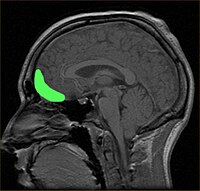
Photo from wikipedia
AIM The aim of this study was to analyze electroclinical features of a group of patients with West syndrome (WS) who subsequently developed Lennox-Gastaut syndrome (LGS) during the transition between… Click to show full abstract
AIM The aim of this study was to analyze electroclinical features of a group of patients with West syndrome (WS) who subsequently developed Lennox-Gastaut syndrome (LGS) during the transition between both syndromes. METHODS A retrospective and descriptive study was conducted of a series of patients diagnosed with WS who developed LGS seen at Hospital de Pediatría Prof. Dr. JP Garrahan between January 2012 and January 2019. The medical charts of 170 patients with WS were analyzed. In 63 (37 %) of the children WS evolved to LGS. RESULTS During the transition from WS to LGS four well-defined electroclinical patterns were recognized. The first corresponded to a group of patients with multiple seizure types, including epileptic spasms associated with multifocal paroxysms; the electroclinical pattern in second group showed mainly focal seizures associated with focal discharges in the EEG; the third group showed predominance of epileptic spasms and myoclonic seizures associated with diffuse spike-and-wave and polyspike-and-wave paroxysms; and the remaining group was characterized by a mixed electroclinical pattern including features of the other three groups. All patients had a neuropsychological deficit. Worsening of cognition and behavior was observed during the transition period in 11, 8, and 5 patients of groups 1, 3, and 4, respectively. CONCLUSION Our study of the transition period from WS to LGS allowed us to recognize four well-defined electroclinical patterns. The early recognition of the different patterns could, in the future, support a more precocious prognostic evaluation.
Journal Title: Epilepsy Research
Year Published: 2020
Link to full text (if available)
Share on Social Media: Sign Up to like & get
recommendations!